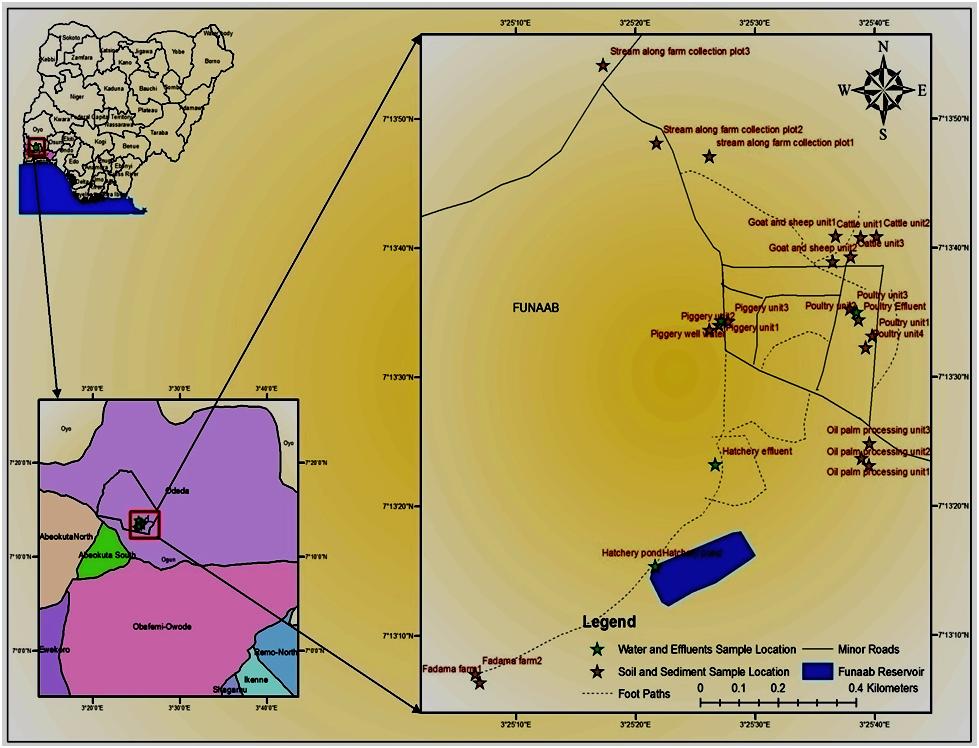Environmental Audit of Integrated Farm Industry Settlement in Abeokuta, Ogun State, Nigeria
Main Article Content
Abstract
Environmental auditing is a necessary part of environmental management providing feedback mechanisms about overall environmental performance, and specific problem areas as well as corrective actions. This study assessed the pollution level and environmental performance of an integrated farm settlement which involved audit checklist administration and laboratory analyses of soil, sediment and water samples. Criteria parameters such as pH, temperature, total dissolved solids (TDS), electrical conductivity (EC), biochemical oxygen demand (BOD), chemical oxygen demand (COD), nitrate, phosphate, total nitrogen, and available phosphorus were determined in the media. Results showed that pH values ranged from 7.67-10.20, 9.06-9.82 and 8.9-9.27 in soil, water and sediment respectively. EC ranged from 59-450 µS/cm in soil, 106-277 µS/cm in sediment and 177-509 µS/cm in water and 643-814 in effluent. TDS ranged between 29 and 243 ppm in soil, 53-139 ppm in sediment and 90-252 ppm in water and 318-404 in effluent samples. Nitrate and phosphate concentrations in water samples ranged between 1.20-1.37 mg/L and 0.10-0.17 mg/L along with low BOD value which ranged from 0.70-1.20 mg/L while the COD value ranged between 32-382 mg/L. Total nitrogen and available phosphorus in sediment samples ranged from 0.32-2.85% and 46.3-112.3 mg/kg respectively. pH levels in water samples (PW and RP) were slightly above the WHO guideline while COD in effluent samples (HE and PE) exceeded NESREA limit. Environmental management practices were almost non-existent evidenced by resource wastage and lack of adequate waste management plan. Improved farm integration aimed at zero wastage should be adopted.
Article Details
Published articles are under the copyright of the Environment and Natural Resources Journal effective when the article is accepted for publication thus granting Environment and Natural Resources Journal all rights for the work so that both parties may be protected from the consequences of unauthorized use. Partially or totally publication of an article elsewhere is possible only after the consent from the editors.

